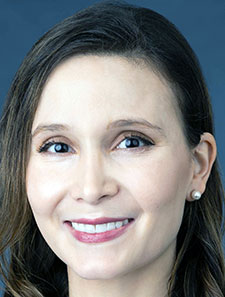 International medical graduates (IMGs) are defined by the Educational Commission for Foreign Medical Graduates as physicians who completed their medical education outside the U.S. and Canada.1 They may or may not have U.S. citizenship, so this article will focus on those that do not. Each year, many attempt to secure residency training in the U.S., with a match rate of about 58% for IMGs without U.S. citizenship, contributing to a growing IMG workforce.2,3 As of 2023, almost 25% of active physicians in the U.S. are IMGs, although this ratio was much higher in internal medicine (39%) and family medicine (32%).4,5 Within hospital medicine, exact numbers are not known. Although it had its limitations, 45% of hospitalist respondents to “Today’s Hospitalist Compensation and Career Survey” identified themselves as IMG.6 Although they are a notable part of the fabric of American healthcare, IMG physicians’ transition into the U.S. healthcare system is often challenged by many predictable and unpredictable factors including being accepted to university programs, visa issues, and bias from both patients and colleagues.7-9
International medical graduates (IMGs) are defined by the Educational Commission for Foreign Medical Graduates as physicians who completed their medical education outside the U.S. and Canada.1 They may or may not have U.S. citizenship, so this article will focus on those that do not. Each year, many attempt to secure residency training in the U.S., with a match rate of about 58% for IMGs without U.S. citizenship, contributing to a growing IMG workforce.2,3 As of 2023, almost 25% of active physicians in the U.S. are IMGs, although this ratio was much higher in internal medicine (39%) and family medicine (32%).4,5 Within hospital medicine, exact numbers are not known. Although it had its limitations, 45% of hospitalist respondents to “Today’s Hospitalist Compensation and Career Survey” identified themselves as IMG.6 Although they are a notable part of the fabric of American healthcare, IMG physicians’ transition into the U.S. healthcare system is often challenged by many predictable and unpredictable factors including being accepted to university programs, visa issues, and bias from both patients and colleagues.7-9
Despite their contributions to the U.S. healthcare system, IMGs need a work permit and ultimately a visa sponsorship to practice medicine in the U.S. The vast majority will have had a J-1 visa during residency, which is an education exchange visa that the U.S. Department of State authorizes the Educational Commission for Foreign Medical Graduates to sponsor.10 After residency, a J-1 visa holder will have to either return to their home country for two years to share the knowledge obtained in the U.S. or complete a three-year waiver medical job in an underserved U.S. area. After either one of those requirements is met, the IMG J-1 visa holders then become eligible to obtain new work authorization via a temporary work visa (H-1B) or an immigrant visa (also known as permanent resident status or green card). An H-1B visa is for temporary workers in specialty occupations with professional degrees, such as medicine. They last for six years and do not require the three-year waiver job nor the two-year return to home country. Although the path to an H-1B visa often involves having a J-1 visa first, a small percentage of IMGs can have their H-1B visa sponsored directly during medical residency training if the medical institution can sponsor it. A study from 2022 showed that 63.7% of internal medicine programs accepted J-1 visas, and of those, 34.5% also sponsored H-1B visas.11
Eventually, IMGs entering hospital medicine are candidates for employer-sponsored permanent resident status or self-sponsorship depending on their employer’s policies and evidence of “extraordinary abilities,” such as research. Subsequently, they can apply for U.S. citizenship after three to five years of permanent residency status, though applying for citizenship has its own set of complications with quotas from origin countries, which can lead to prolonged struggles to obtain citizenship before the promise of a permanent life in the U.S. These visa restrictions affect the ability of IMG hospitalists to visit their country of origin and have their family networks visit them, which can lead to social isolation.
Having some knowledge of childcare resources and community cultural support groups could be useful information for new IMG hospitalists in a group. Furthermore, there should be an effort to build community within the division through affinity groups and encouraging participation in division events to help combat social isolation.
Even with visa sponsorship, IMG hospitalists may face both macroaggressions and microaggressions from colleagues and patients about their ethnicity, citizenship, or accents.12 They may, unfortunately, face xenophobic bias, with questions about their medical knowledge and ability to provide high-quality patient care efficiently in the U.S.13 This is despite IMGs enriching their health systems with different educational backgrounds, and having knowledge of diverse belief systems, which can significantly impact patients’ health and recovery. A British Medical Journal study looking at Medicare admissions from 2011 to 2014 proved this bias to be unfounded; IMG hospitalists cared for patients with more chronic conditions than average, and there was slightly lower 30-day mortality with statistical significance.13 Verbal and physical violence against hospitalists lamentably exists, and there should be protections for all hospitalists against macroaggressions. In addition, IMG hospitalists may be disproportionately affected by them. There should be a process of behavioral contracts for patients who repeatedly use racist or xenophobic language. For offenders who continue their behavior, there should be leadership support to discuss possible administrative discharge with the hospital’s risk and legal teams. There should also be an outreach to affected hospitalists to provide the opportunity to discuss their situation one-on-one with leadership, or at a division-sponsored Behavioral Challenges Conference on dealing with abusive patients, and lessons learned for the hospital medicine group.
Inclusivity also includes celebrating the heritage and holidays of the people working within the division. Especially for IMGs who may have visa restrictions on returning home for certain events, recognition of holidays within the group shows community support for the joy or sorrow a holiday may commemorate. Although an effort should be made to try and honor schedule requests for different holidays such as Rosh Hashanah, Eid-al-Fitr, Diwali, Lunar New Year, Christmas, Easter, and others, this may be difficult with existing complex scheduling structures. However, special attention could be paid by the leadership to personally acknowledge those who are working through the holiday for a morale boost. It also includes respecting other parts of one’s culture such as cultural dietary restrictions including vegetarian diets, halal diets, and kosher diets, among others. During division events that feature food, an effort should be made to accommodate cultural dietary restrictions.
IMG hospitalists form a significant part of the U.S. healthcare workforce. Like their non-IMG colleagues, they have an impact on our communities by supporting patients through their most vulnerable time of hospitalization. However, being an IMG comes with an additional set of stressors that can make hospitalists feel not included in the environment, especially when it comes to issues around visas and bias. Further research into IMG physician wellness and advocacy for IMG physician colleagues are the next steps in addressing these disparities.

Dr. Yu

Dr. Musri

Dr. Khanijow
Dr. Yu is a hospitalist and director of the hospital medicine observership program at Johns Hopkins Bayview Medical Center and an assistant professor of medicine at Johns Hopkins University School of Medicine in Baltimore. Dr. Musri is a nocturnist hospitalist, co-chair of the women in medicine group, member of the DEI committee within the hospitalist division, and core faculty for the hospital medicine observership program at Johns Hopkins Bayview Medical Center and instructor of medicine at Johns Hopkins University School of Medicine in Baltimore. Dr. Khanijow (@gayhospitalist) is a hospitalist and assistant professor of medicine at Johns Hopkins Bayview Medical Center in Baltimore. He is co-founder of SHM’s LGBTQIA+ Health Task Force, an inaugural member of the SHM DEI Committee, and chair of the SHM DEI Special Interest Group.
References
- Educational Commission for Foreign Medical Graduates. Certification. ECFMG website. https://www.ecfmg.org/certification/. Updated September 5, 2024. Accessed October 8, 2024.
- Ranasinghe PD. International medical graduates in the US physician workforce. J Am Osteopath Assoc. 2015;115(4):236-241.
- ECFMG News. IMGs Show Strong Performance in 2024 Match. ECFMG website. https://www.ecfmg.org/news/2024/03/18/imgs-show-strong-performance-in-2024-match/. Published March 18, 2024. Accessed October 8, 2024.
- American Medical Association. Advocacy in action: Clearing IMGs’ route to practice. AMA website. https://www.ama-assn.org/education/international-medical-education/advocacy-action-clearing-imgs-route-practice. Published June 7, 2023. Accessed October 8, 2024.
- Ahmed AA, Hwang WT, et al. International medical graduates in the us physician workforce and graduate medical education: current and historical trends. J Grad Med Educ. 2018;10(2):214-218.
- Today’s Hospitalist. A look at IMG hospitalists. Today’s Hospitalist website. https://todayshospitalist.com/a-look-at-img-hospitalists/. Published March 2020. Accessed October 8, 2024.
- Reddy ST, Kisielewski M, et al. Where do international medical graduates matriculate for internal medicine training? A national longitudinal study. J Gen Intern Med. 2021;36(8):2230-2236.
- Symes HA, Boulet J, et al. International medical graduate resident wellness: examining qualitative data from J-1 visa physician recipients. Acad Med J Assoc Am Med Coll. 2022;97(3):420-425.
- Healey SJR, Fakes K, et al. Inequitable treatment as perceived by international medical graduates (IMGs): a scoping review. BMJ Open. 2023;13(7):e071992. doi:10.1136/bmjopen-2023-071992
- Immigration information for international medical graduates. American Medical Association website. https://www.ama-assn.org/education/international-medical-education/immigration-information-international-medical-graduates. Accessed October 8, 2024.
- Tiako MJN, Fatola A, et al. Reported visa acceptance or sponsorship for non-US Citizen applicants to US internal medicine residency programs. J Grad Med Educ. 2022;14(6):680-686.
- Smith SM, Parkash V. Normalized “medical inferiority bias” and cultural racism against international medical graduate physicians in academic medicine. Acad Pathol. 2023;10(4):100095. doi:10.1016/j.acpath.2023.100095
- Tsugawa Y, Jena AB, et al. Quality of care delivered by general internists in US hospitals who graduated from foreign versus US medical schools: observational study. BMJ. 2017;356:j273. doi:10.1136/bmj.j273